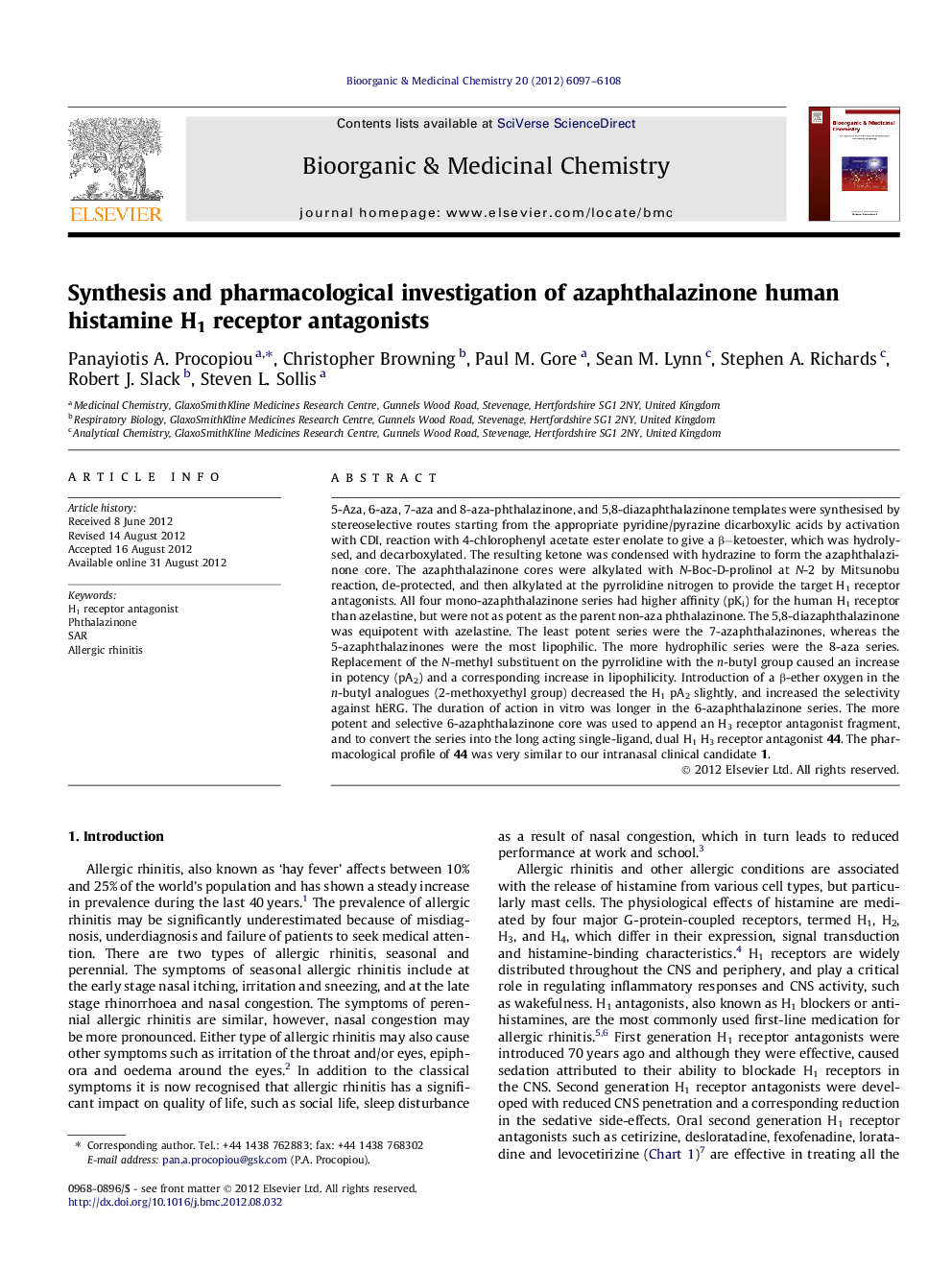| کد مقاله | کد نشریه | سال انتشار | مقاله انگلیسی | نسخه تمام متن |
|---|---|---|---|---|
| 1359803 | 981415 | 2012 | 12 صفحه PDF | دانلود رایگان |

5-Aza, 6-aza, 7-aza and 8-aza-phthalazinone, and 5,8-diazaphthalazinone templates were synthesised by stereoselective routes starting from the appropriate pyridine/pyrazine dicarboxylic acids by activation with CDI, reaction with 4-chlorophenyl acetate ester enolate to give a β−ketoester, which was hydrolysed, and decarboxylated. The resulting ketone was condensed with hydrazine to form the azaphthalazinone core. The azaphthalazinone cores were alkylated with N-Boc-D-prolinol at N-2 by Mitsunobu reaction, de-protected, and then alkylated at the pyrrolidine nitrogen to provide the target H1 receptor antagonists. All four mono-azaphthalazinone series had higher affinity (pKi) for the human H1 receptor than azelastine, but were not as potent as the parent non-aza phthalazinone. The 5,8-diazaphthalazinone was equipotent with azelastine. The least potent series were the 7-azaphthalazinones, whereas the 5-azaphthalazinones were the most lipophilic. The more hydrophilic series were the 8-aza series. Replacement of the N-methyl substituent on the pyrrolidine with the n-butyl group caused an increase in potency (pA2) and a corresponding increase in lipophilicity. Introduction of a β-ether oxygen in the n-butyl analogues (2-methoxyethyl group) decreased the H1 pA2 slightly, and increased the selectivity against hERG. The duration of action in vitro was longer in the 6-azaphthalazinone series. The more potent and selective 6-azaphthalazinone core was used to append an H3 receptor antagonist fragment, and to convert the series into the long acting single-ligand, dual H1 H3 receptor antagonist 44. The pharmacological profile of 44 was very similar to our intranasal clinical candidate 1.
Synthesis and SAR of novel 5-, 6-, 7-, 8-aza, 5,8-diazaphthalazinone derivatives 2, and dual H1 H3 receptor antagonist 44.Figure optionsDownload as PowerPoint slide
Journal: Bioorganic & Medicinal Chemistry - Volume 20, Issue 20, 15 October 2012, Pages 6097–6108